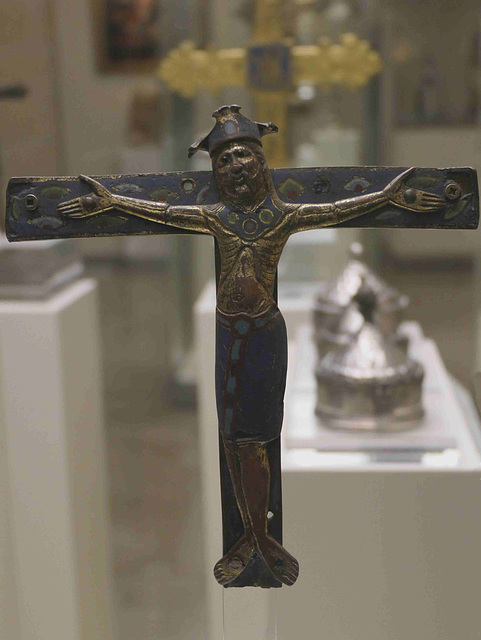Location
See also...
Keywords
Authorizations, license
-
Visible by: Everyone -
All rights reserved
-
17 visits
Burgos - Catedral de Burgos


In the 7th/8th century, the area was reconquered from the hands of the Moors by the kings of Asturias. A castle was built in 884 on the orders of King Alfonso III. Burgos became the coronation city of the kings of Castile in the 11th century, which underlines its special importance. After the conquest of Toledo by Alfonso VI. (1085). The city became the see of a Diocese and was a major stop for pilgrims to Santiago de Compostela. Burgos lost its importance a little, but the city remained an important economic, cultural, and political center in northern Spain. The Convento de San Pablo was a Dominican monastery founded in 1224 that existed until 1835.
The construction of the cathedral was ordered by King Ferdinand III of Castile and the Bishop of Burgos. Ferdinand had just married Barbarossa´s granddaughter Beatrice of Swabia (aka "Elisabeth of Swabia") and wanted a cathedral, reflecting his new role in the European power game.
The former Romanesque cathedral was demolished in 1221, and the construction of the new Gothic started under the guidance of a French architect. After nine years, the chevet was completed and the high altar was consecrated. Then the construction stopped for about 200 years.
Attending the Council of Basel (aka "Council of Florence") in 1435 bishop Alfonso de Cartagena saw the elegant towers of the Basel Minster. When he returned to Burgos he was accompanied by German architect Johannes von Köln (aka "Juan de Colonia"), who probably knew the blueprints of the towers, planned for the Cathedral of Cologne. Under his guidance, the towers of the Cathedral were completed in open tracery. He was followed on the construction site by his son Simon de Colonia. Francisco de Colonia, Simon's son, continued the work and created the Pellejería-Portal. This was a family business.
As I have uploaded many photos of the cathedral before, I will only add a few for now.
12th./13th. century - copper and enamel
The construction of the cathedral was ordered by King Ferdinand III of Castile and the Bishop of Burgos. Ferdinand had just married Barbarossa´s granddaughter Beatrice of Swabia (aka "Elisabeth of Swabia") and wanted a cathedral, reflecting his new role in the European power game.
The former Romanesque cathedral was demolished in 1221, and the construction of the new Gothic started under the guidance of a French architect. After nine years, the chevet was completed and the high altar was consecrated. Then the construction stopped for about 200 years.
Attending the Council of Basel (aka "Council of Florence") in 1435 bishop Alfonso de Cartagena saw the elegant towers of the Basel Minster. When he returned to Burgos he was accompanied by German architect Johannes von Köln (aka "Juan de Colonia"), who probably knew the blueprints of the towers, planned for the Cathedral of Cologne. Under his guidance, the towers of the Cathedral were completed in open tracery. He was followed on the construction site by his son Simon de Colonia. Francisco de Colonia, Simon's son, continued the work and created the Pellejería-Portal. This was a family business.
As I have uploaded many photos of the cathedral before, I will only add a few for now.
12th./13th. century - copper and enamel
kiiti has particularly liked this photo
- Keyboard shortcuts:
Jump to top
RSS feed- Latest comments - Subscribe to the comment feeds of this photo
- ipernity © 2007-2024
- Help & Contact
|
Club news
|
About ipernity
|
History |
ipernity Club & Prices |
Guide of good conduct
Donate | Group guidelines | Privacy policy | Terms of use | Statutes | In memoria -
Facebook
Twitter

Sign-in to write a comment.